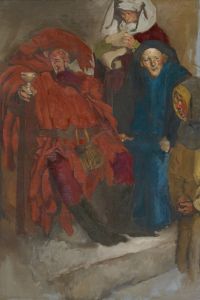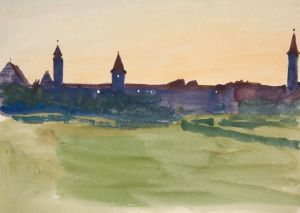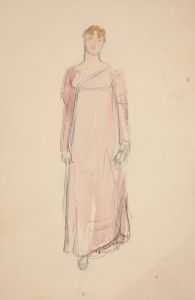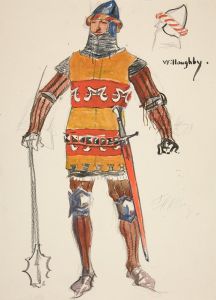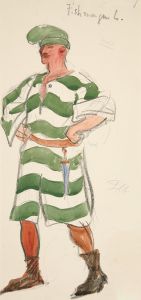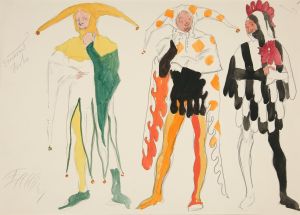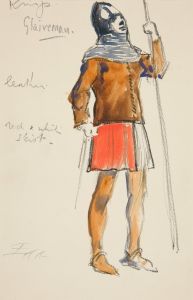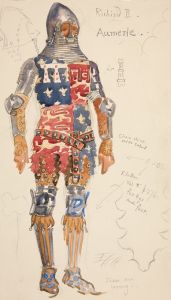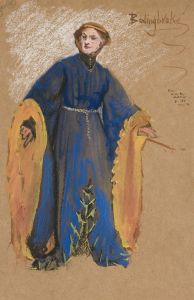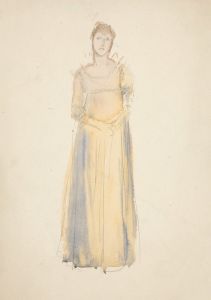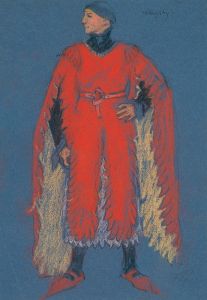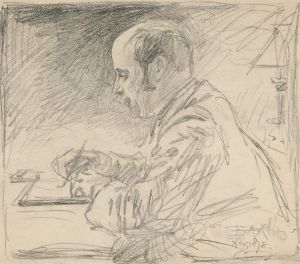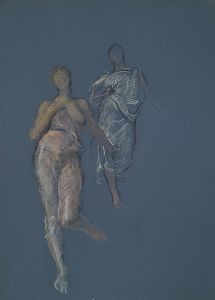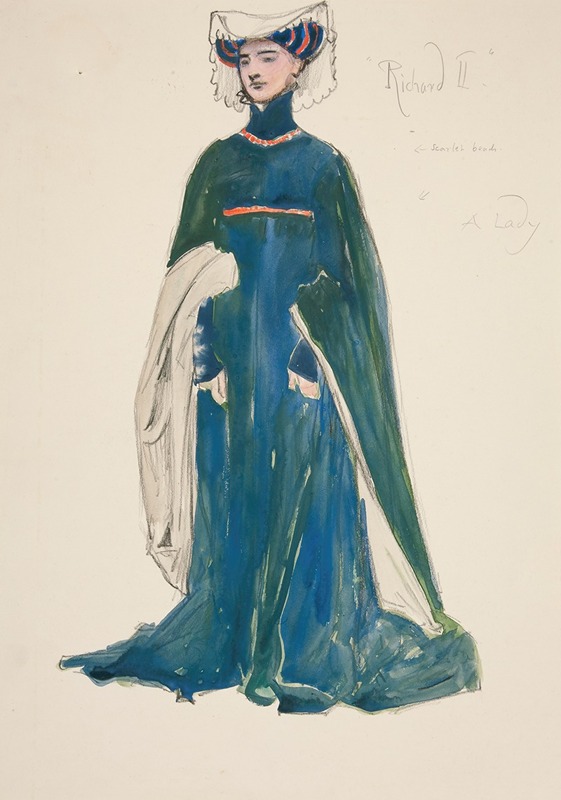
A Lady, costume sketch for Henry Irving’s Planned Production of King Richard II
A hand-painted replica of Edwin Austin Abbey’s masterpiece A Lady, costume sketch for Henry Irving’s Planned Production of King Richard II, meticulously crafted by professional artists to capture the true essence of the original. Each piece is created with museum-quality canvas and rare mineral pigments, carefully painted by experienced artists with delicate brushstrokes and rich, layered colors to perfectly recreate the texture of the original artwork. Unlike machine-printed reproductions, this hand-painted version brings the painting to life, infused with the artist’s emotions and skill in every stroke. Whether for personal collection or home decoration, it instantly elevates the artistic atmosphere of any space.
Edwin Austin Abbey was an American artist known for his work in both illustration and painting, particularly in the realm of Shakespearean subjects. One of his notable works is the costume sketch titled "A Lady, costume sketch for Henry Irving’s Planned Production of King Richard II." This piece is part of Abbey's extensive involvement in theatrical design, particularly during the late 19th and early 20th centuries.
Abbey was born in Philadelphia in 1852 and began his career as an illustrator for magazines such as Harper's Weekly. His interest in historical and literary themes led him to move to England in 1878, where he became deeply involved in the art scene. Abbey's work often focused on historical and literary subjects, and he became particularly renowned for his illustrations of Shakespearean plays.
The sketch "A Lady, costume sketch for Henry Irving’s Planned Production of King Richard II" was created as part of Abbey's collaboration with the famous English actor-manager Henry Irving. Irving was a prominent figure in the London theater scene and was known for his ambitious productions of Shakespearean plays. Abbey's role was to design costumes that would enhance the authenticity and visual appeal of these productions.
This particular sketch was intended for a production of "King Richard II," a historical play by William Shakespeare that explores the themes of kingship, power, and identity. The play is set in the late 14th century and revolves around the downfall of King Richard II of England. Abbey's costume designs aimed to reflect the historical period accurately while also contributing to the dramatic and aesthetic impact of the production.
Abbey's sketches are characterized by their attention to detail and historical accuracy. He conducted thorough research into the clothing and styles of the period to ensure that his designs were both authentic and visually striking. His work in costume design was highly regarded and contributed significantly to the success of Irving's productions.
Although the planned production of "King Richard II" by Henry Irving did not materialize as initially intended, Abbey's sketches remain valuable as examples of his artistic skill and his contribution to the theatrical arts. These works are part of Abbey's broader legacy, which includes murals, paintings, and illustrations that continue to be celebrated for their historical and artistic significance.
Abbey's influence extended beyond his lifetime, as his work set a standard for historical accuracy and artistic quality in theatrical design. His collaboration with figures like Henry Irving highlights the intersection of visual art and theater during this period, showcasing the importance of costume design in bringing Shakespearean drama to life on stage.





